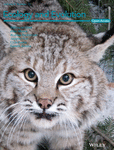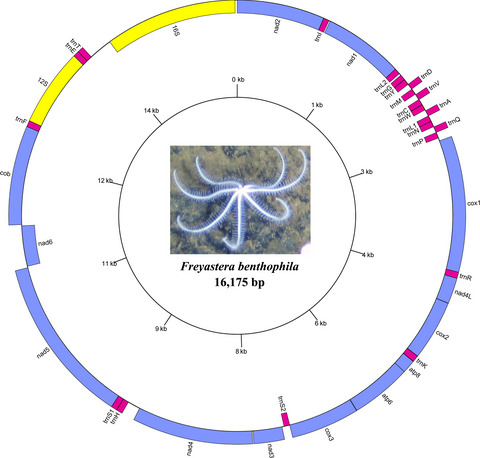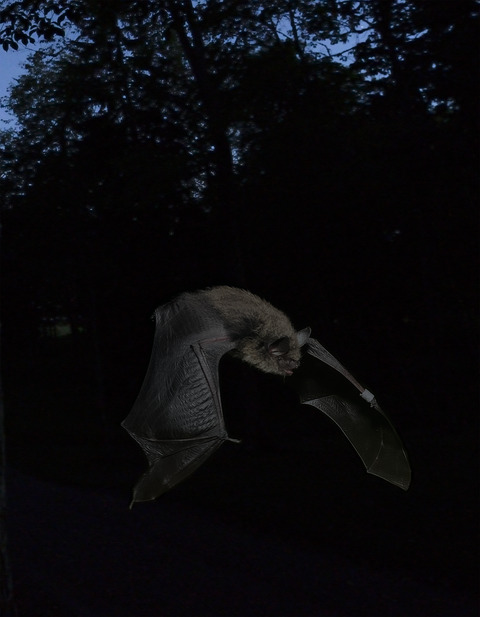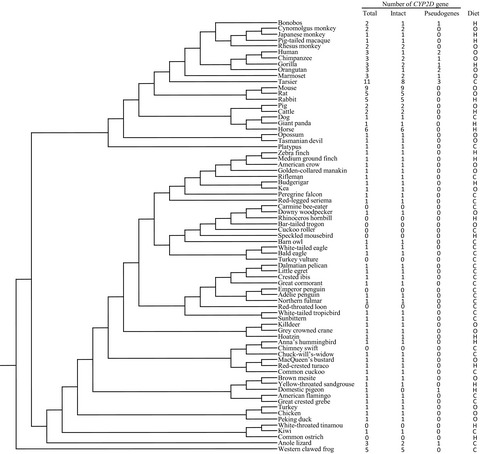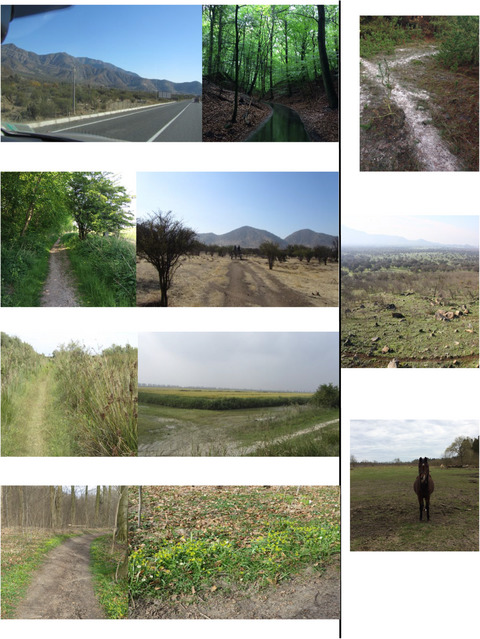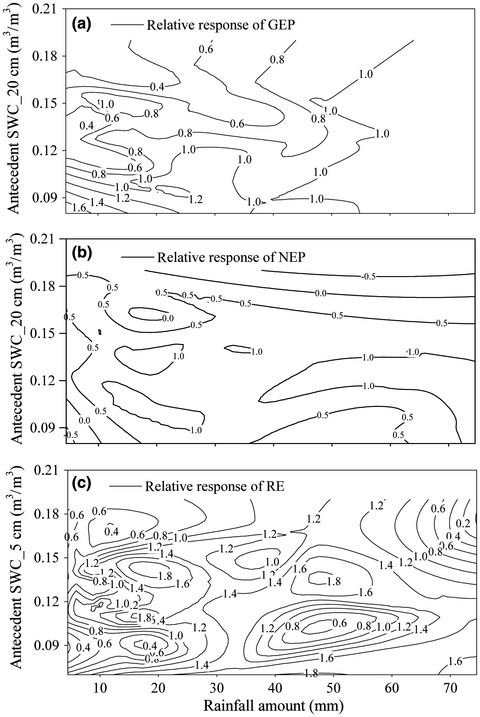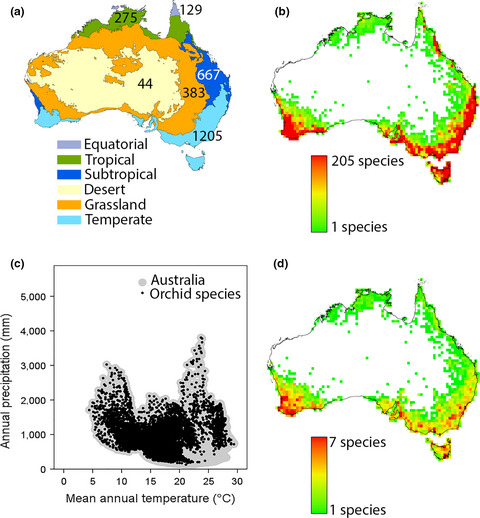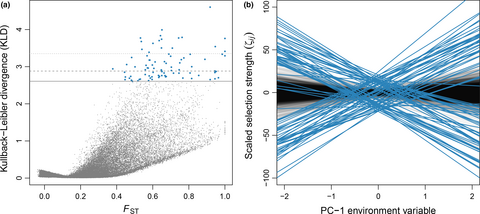Journal list menu
Export Citations
Download PDFs
ISSUE INFORMATION
ORIGINAL RESEARCH
Pooled whole-genome sequencing of interspecific chestnut (Castanea) hybrids reveals loci associated with differences in caching behavior of fox squirrels (Sciurus niger L.)
- Pages: 10638-10654
- First Published: 23 October 2018
The importance of competition for light depends on productivity and disturbance
- Pages: 10655-10661
- First Published: 26 October 2018
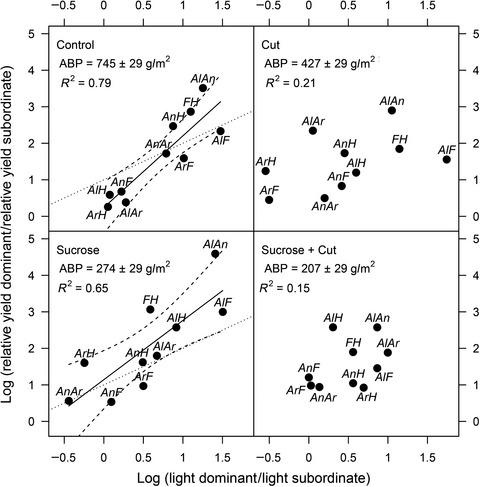
Eutrophication is a major cause of biodiversity loss, but the underlying mechanisms are still under intense debate. We show that competition switches from symmetric (size-proportionate access to resource) to asymmetric (size-disproportionate access to resources) as fertility and productivity increase. Our results emphasize the need to mitigate chronic human-induced nutrient inputs to ecosystems in order to maintain and restore plant diversity and associated ecosystem functioning.
Migratory connectivity in the Loggerhead Shrike (Lanius ludovicianus)
- Pages: 10662-10672
- First Published: 24 October 2018
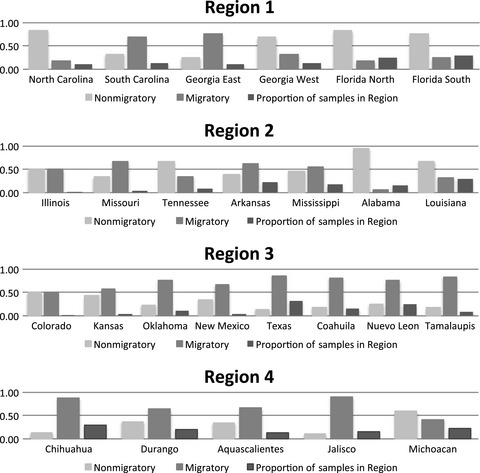
We combine genetic and stable isotope data to quantify patterns of migratory connectivity of Loggerhead Shrike, a species of conservation concern in North America, to assess how connectivity differs and impacts subpopulation trajectories. Our study used a Bayesian framework and species- and age-specific δ2Hf isoscapes and genetic markers to distinguish between co-occurring migratory and nonmigratory individuals on the wintering grounds.
The first complete mitochondrial genome of the Mariana Trench Freyastera benthophila (Asteroidea: Brisingida: Brisingidae) allows insights into the deep-sea adaptive evolution of Brisingida
- Pages: 10673-10686
- First Published: 31 October 2018
Plant phenological asynchrony and community structure of gall-inducing insects associated with a tropical tree species
- Pages: 10687-10697
- First Published: 01 November 2018
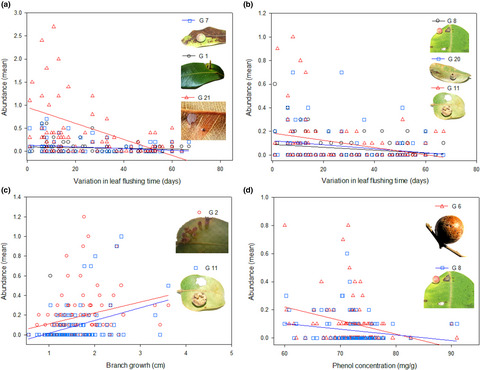
The richness and composition of gall-inducing species varied according to the variation in leaf flushing time of the host plant. The results of null models analysis showed that galls co-occurrence on Copaifera langsdorffii trees differ than expected by chance and interspecific competition can be one potential mechanism structuring gall-forming community.
Noninvasive western lowland gorilla's health monitoring: A decade of simian immunodeficiency virus surveillance in southern Cameroon
- Pages: 10698-10710
- First Published: 25 October 2018
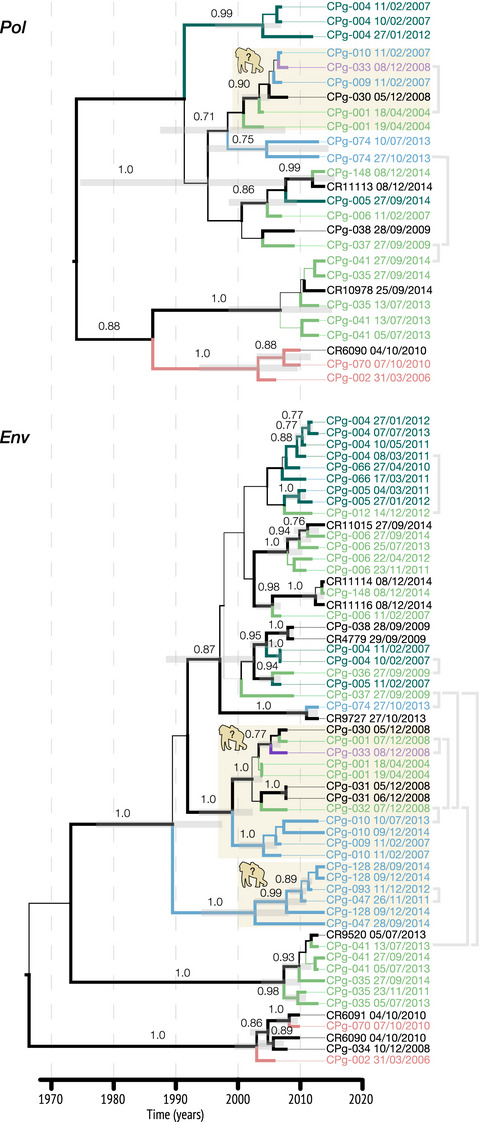
We established a noninvasive sampling method that does not interfere with gorillas' natural behaviour to provide wildlife SIV surveillance and health monitoring for conservation in Cameroon. We provided insights into gorilla social dynamics and SIVgor evolution. Our results validate a noninvasive approach to the recovery of otherwise unobtainable information directly related to the ecology of mammals and of infectious diseases in the wilderness.
Evolutionary effects of fishing gear on foraging behavior and life-history traits
- Pages: 10711-10721
- First Published: 25 October 2018
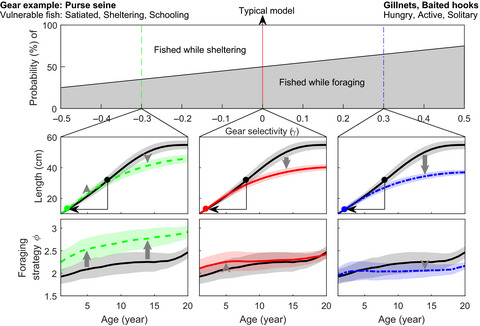
Using a state-dependent dynamic programming model, we aimed at clarifying theoretical expectations about how behavior-selective fishing can shape the evolution of risk-taking behavior, life-history traits, and emergent natural mortality. First, our results are in line with earlier findings that an increased fishing mortality leads to increased natural mortality, earlier maturation, reduced size at age, and increased reproductive investment. Second, we found that the intensity of changes in natural mortality, length, and risk-taking behavior depends on whether fishing is targeting active, foraging (“bold”) fish, or passive, sheltering (“timid”) fish.
Maternal age effects on fecundity and offspring egg-to-adult viability are not affected by mitochondrial haplotype
- Pages: 10722-10732
- First Published: 18 October 2018
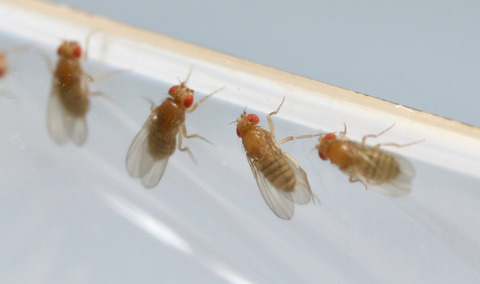
In this study, we tested whether age-related declines in female fruit fly fecundity and egg-to-adult viability varied based on mitochondrial DNA genotype. Using 13 strains of fruit flies with different mitochondrial DNA genotypes expressed alongside a common nuclear genetic “background,” we measured fecundity and egg-to-adult viability in females across five age classes. We found that mitochondrial genotype did not affect the rate of physiological decline with increasing age in female fruit flies.
Hidden cost of disease in a free-ranging ungulate: brucellosis reduces mid-winter pregnancy in elk
- Pages: 10733-10742
- First Published: 28 October 2018

We estimate that the combination of reduced pregnancy by mid-winter and the abortions following mid-winter reduces the reproductive output of exposed female elk by 24%, which affects population dynamics to a similar extent as severe winters or droughts. Exposing hidden reproductive costs of disease is essential to avoid conflating them with the effects of climate and predation.
Mycorrhizal interactions do not influence plant–herbivore interactions in populations of Clarkia xantiana ssp. xantiana spanning from center to margin of the geographic range
- Pages: 10743-10753
- First Published: 26 October 2018
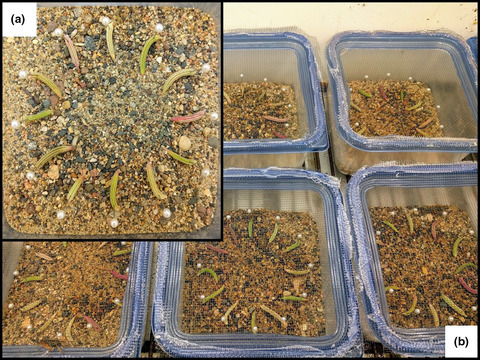
We sampled populations of a California endemic plant from across its geographic range to test for interactions between plants, mycorrhizal fungi, and insect herbivores. Plants showed strong negative effects of inoculation with mycorrhizal spores but this did not influence herbivore preference for plant fruits
Size-dependent movement explains why bigger is better in fragmented landscapes
- Pages: 10754-10767
- First Published: 23 October 2018
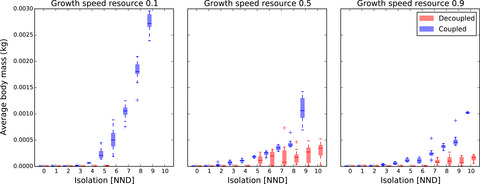
Based on established allometric rules, we designed a spatially explicit model, studying the effect of habitat isolation and resource growth on body size distribution of a consumer population or community. We compared scenarios of size-dependent and size-independent movement. Our results highlight the vital importance of size-dependent movement for the survival of isolated populations. Fine-grained isolation has a positive effect on consumer body size, with multiple body sizes coexisting at intermediate levels of isolation. Selected body size distributions are observed to affect consumer stability and resource abundance.
Evaluation of modeling strategies for assessing self-thinning behavior and carrying capacity
- Pages: 10768-10779
- First Published: 11 November 2018
Plasticity in nesting adaptations of a tidal marsh endemic bird
- Pages: 10780-10793
- First Published: 18 October 2018
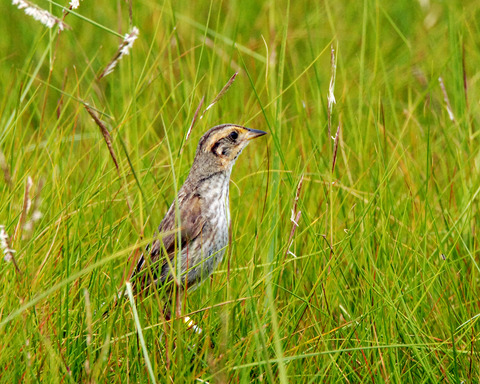
Perceiving risks and responding accordingly may be important to balance selective pressures in a dynamic environment. Tidal-marsh-nesting birds that are subject to competing risks of predation and flooding make changes to their nesting behavior based on their prior experience. Females that experienced nest flooding increased the height of their subsequent nests and renested in a higher elevation area of the marsh, thereby adopting behaviors that mitigate flooding, while those that were depredated renested lower in the vegetation, reducing visibility to predators. Females had high fidelity in their nest site locations, although those with failed nests had a tendency to renest a farther distance from their prior nest than those that with successful nests.
Effects of model choice, network structure, and interaction strengths on knockout extinction models of ecological robustness
- Pages: 10794-10804
- First Published: 31 October 2018
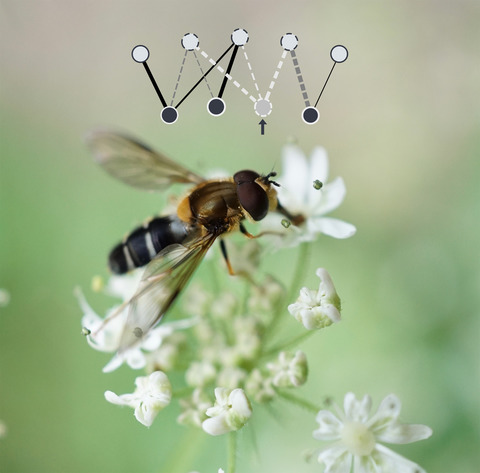
We present a suite of knockout extinction models for plant–pollinator networks which we use to test the effects of extinction rules, interaction weights, and network structure on robustness. Our analysis reveals the mechanisms and fundamental network properties that drive observed trends in robustness.
The impact of autotrophic versus heterotrophic nutritional pathways on colony health and wound recovery in corals
- Pages: 10805-10816
- First Published: 18 October 2018
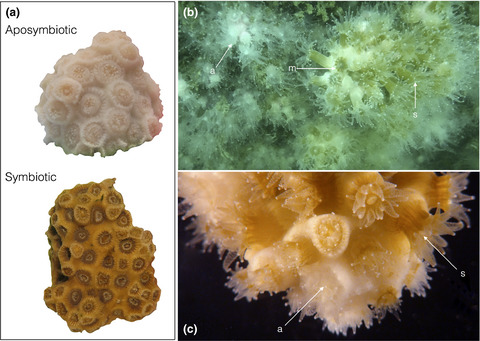
In this study, we utilized a temperate coral–algal system (the northern star coral, Astrangia poculata, and its photosynthetic endosymbiont, Symbiodinium psygmophilum) to explore the impacts of nutritional sourcing on the host's health and ability to regenerate experimentally excised polyps. Healing initiation, tissue loss, polyp regeneration, and overall colony tissue cover were affected differentially, suggesting a diversity in energetic sourcing for each of these processes. These effects may also be compounded by feeding-based influences on host (polyp extension) and endosymbiont (photosynthetic activity) behavior.
SSR-seq: Genotyping of microsatellites using next-generation sequencing reveals higher level of polymorphism as compared to traditional fragment size scoring
- Pages: 10817-10833
- First Published: 25 October 2018
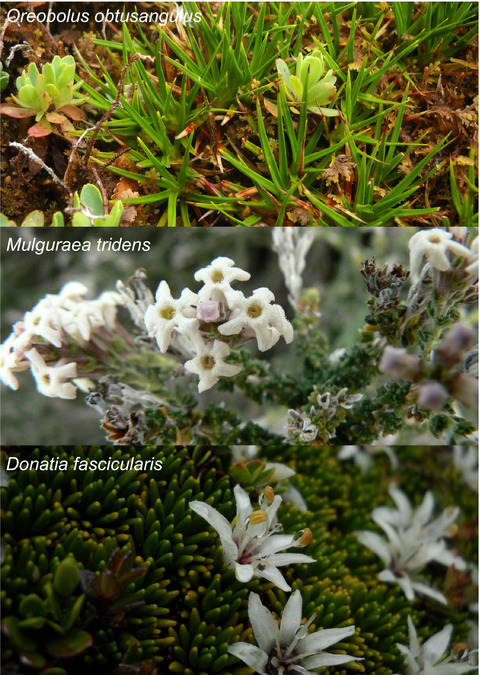
We applied an NGS strategy to genotype hundreds of individuals at many custom-designed microstaellie loci, combining multiplex PCR, barcoding, and Illumina sequencing. We compared outputs from three different datasets based on (i) length of the repetitive region, (ii) total fragment length, and (iii) sequence identity. The number of alleles per locus, as well as observed and expected heterozygosity, was highest in the sequence-identity dataset, because of single nucleotide polymorphisms and insertions/deletions in the flanking regions of the SSR motif.
The effect of plant identity and mixed feeding on the detection of seed DNA in regurgitates of carabid beetles
- Pages: 10834-10846
- First Published: 25 October 2018
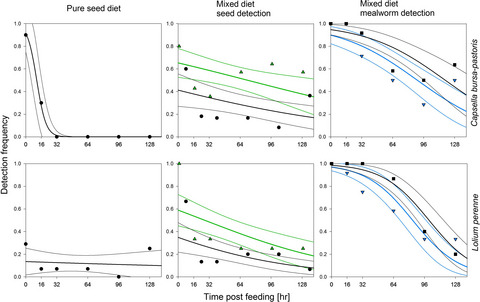
Carabids are abundant in temperate agroecosystems and play a pivotal role as biocontrol agents for weeds and insect pests. In a series of feeding experiments we investigated the effects of an omnivorous diet, which is characteristic for most carabids, and seed identity on the molecular detection of consumed seeds. Results indicate that meal size, seed identity, and their chemical composition can play a role and that mixed feeding leads to an enhancement of food detection intervals.
Trade-off between reproductive and anti-competitor abilities in an insect–parasitic nematode–bacteria symbiosis
- Pages: 10847-10856
- First Published: 18 October 2018
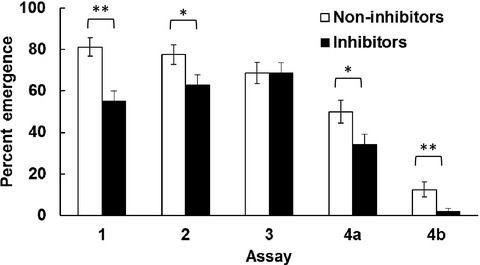
We show that nematodes carrying bacterial symbionts that confer a competitive advantage via allelopathy are less fit in the absence of competition relative to nematodes that carry non-allelopathic symbionts. These competitive and non-competitive phenotypes were isolated from the same population and represent sub-specific variation of both partners. This work highlights the myriad roles that symbionts play in their hosts’ ecologies and the context dependency of fitness.
A mechanistic assessment of the relationship between gut morphology and endozoochorous seed dispersal by waterfowl
- Pages: 10857-10867
- First Published: 30 October 2018
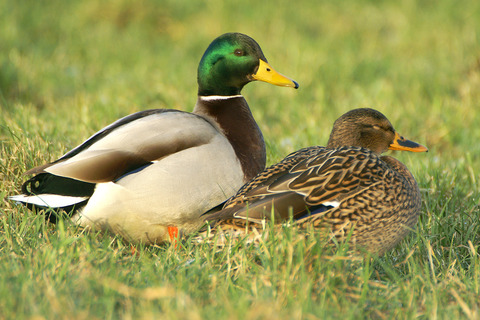
Endozoochorous dispersal of many organisms is greatly influenced by seasonally variable morphology of the disperser's digestive tract. We found that seed survival of gut passage was higher and retention time lower in mallards adapted to low-fibre summer diets versus high-fibre winter diets, while digestive tract measures did not differ between these groups. However, highly variable digestive efficiency between individual mallards feeding on the same diet likely provides opportunities for seed dispersal throughout the annual cycle.
Small copepods could channel missing carbon through metazoan predation
- Pages: 10868-10878
- First Published: 30 October 2018
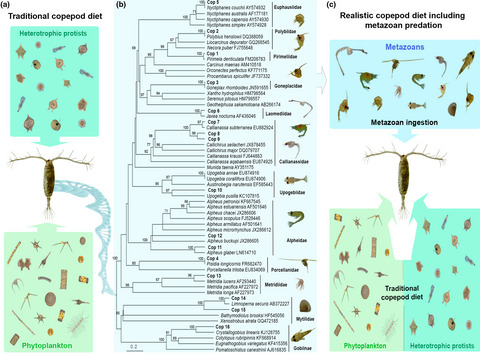
Global ecosystem models (GEMs) are essential tools to make predictions about biogeochemical budgets, fisheries yields or the fate of anthropogenic carbon, but these models have a substantial mismatch between measured and modeled carbon. Copepods are the most abundant multicellular animals on Earth but GEMs currently have copepods feeding only on single cell protists, despite the fact that they also prey upon metazoans, potentially reducing the amount of carbon entering the pelagic food webs. Using a meta-analysis on published copepod feeding rates, the metazoan-copepod link was estimated to be between 1.79 and 27.20 gigatons of C/year at a global scale using field and laboratory estimations, which could increase current estimates of biogeochemical fluxes by 15.6%–24.4%.
Accounting for observation processes across multiple levels of uncertainty improves inference of species distributions and guides adaptive sampling of environmental DNA
- Pages: 10879-10892
- First Published: 23 October 2018
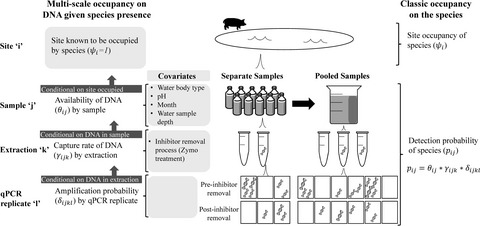
Accounting for multiple levels of observation error associated with using environmental DNA (eDNA) to detect terrestrial mammals results in better estimates of occupancy and provides critical information for designing eDNA studies. We estimated detection probability for an invasive terrestrial mammal at the water sample level, extraction level, and qPCR level and determine factors associated with observation error at those levels to provide unbiased estimates of occupancy.
Evaluating the individuality of animal-habitat relationships
- Pages: 10893-10901
- First Published: 03 October 2018
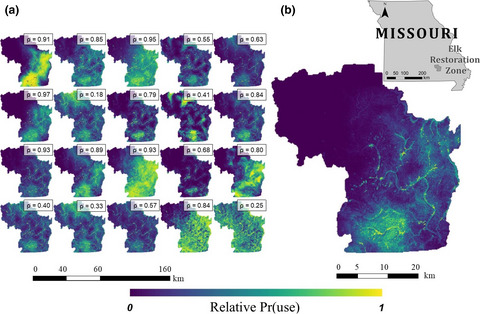
Resource selection functions (RSFs) are widely used to assess animal-habitat relationships. However, the practice of aggregating animal location data to fit a population-level RSF may mask important individual variation. We found substantial variation among a study of elk RSFs and recommend that researchers make efforts to model RSFs at the individual level moving forward.
Habitat effects on intra-species variation in functional morphology: Evidence from freshwater fish
- Pages: 10902-10913
- First Published: 25 October 2018
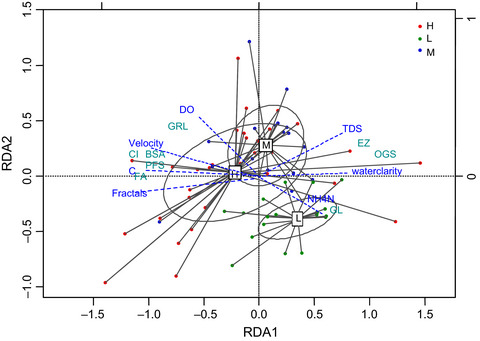
Regional and local habitats have an effect on the biological morphology of fish species, which further affects the functioning of the organism within the ecosystem. Morphological traits associated with locomotion were primarily effected by the river's physical characteristics (such as flow velocity, river fractals, and coefficients of fluvial facies). While morphological traits associated with food acquisition were primarily affected by water chemical factors (such as DO, water clarity, NH4–N concentration, and TDS).
Table for five, please: Dietary partitioning in boreal bats
- Pages: 10914-10937
- First Published: 12 October 2018
Pronounced genetic differentiation in Fokienia hodginsii revealed by simple sequence repeat markers
- Pages: 10938-10951
- First Published: 12 October 2018
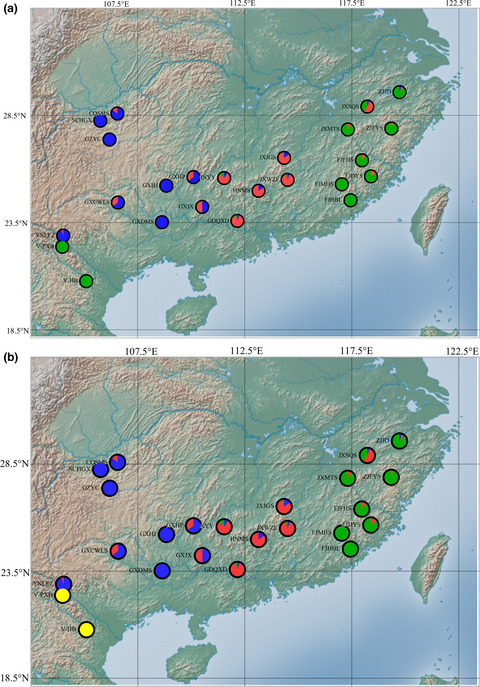
Fokienia hodginsii, a Tertiary relict conifer, was listed as “near threatened” species by the International Union for Conservation of Nature Red List. In this study, a medial to high level of genetic diversity and pronounced genetic diversity were revealed across 427 individuals of F. hodginsii based on the profiles of 12 SSR markers. Isolation by distance, differentiation in terrains, elevations, and climates may serve as the main factors contributing to the differentiations among group.
The disproportionate importance of long-unburned forests and woodlands for reptiles
- Pages: 10952-10963
- First Published: 17 October 2018
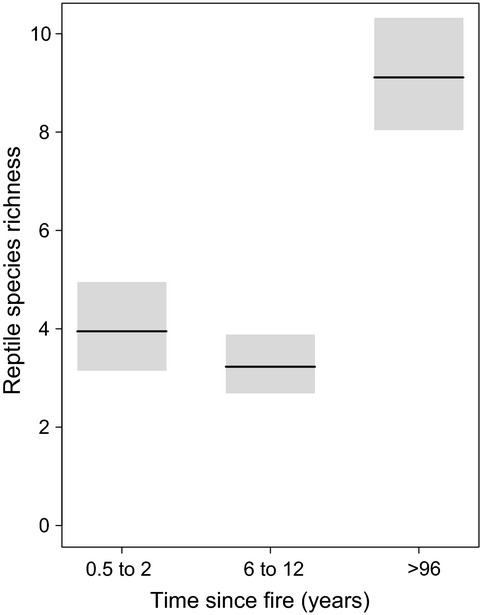
We provide empirical evidence that long-unburned eucalypt forests are disproportionately more important for reptile diversity than recently burned areas. This has important implications for forest management in fire-prone landscapes as long-unburned forest is often prioritized for prescribed burning.
Genetic evidence of female kin clusters in a continuous population of a solitary carnivore, the Eurasian lynx
- Pages: 10964-10975
- First Published: 17 October 2018
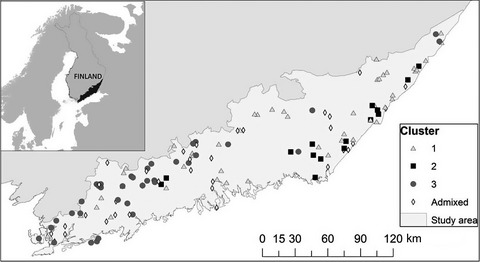
We studied the spatial organization and genetic relatedness among female Eurasian lynx, continuously distributed in southern Finland. We hypothesized that closely related females form matrilineal assemblages, clustering together with relatives living in the neighboring areas. Our results support the hypothesis that the Eurasian lynx forms matrilineal assemblages.
Managing birds of conservation concern on sandy shores: How much room for future conservation actions is there?
- Pages: 10976-10988
- First Published: 17 October 2018
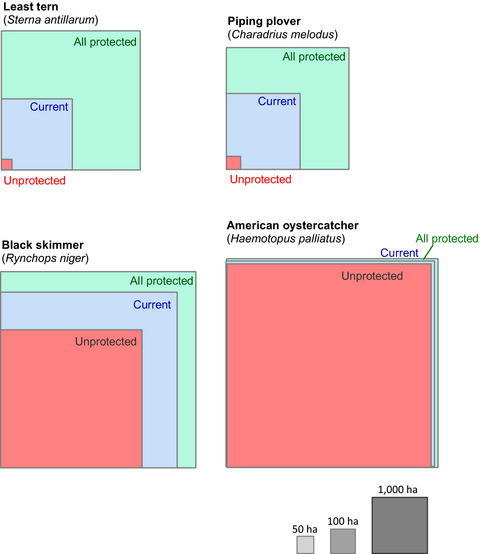
Conservation planning typically entails strategically protecting a network of reserves to shield target species from deleterious anthro.pogenic processes, but limited resources and other practical restraints challenge their practical implementation. Therefore, many on-the-ground protected areas are a collection of ad hoc or opportunistic land acquisitions, many without any active conservation intervention other than restrictions in public access. Here, we use a maximum-likelihood, multi-species distribution modeling approach to examine how protections from human disturbance modify the size and distribution of habitat that will likely support nesting by beach-nesting birds of conservation concern and demonstrate that managing human disturbance has variable conservation benefit depending on the target species.
Ice ages and butterflyfishes: Phylogenomics elucidates the ecological and evolutionary history of reef fishes in an endemism hotspot
- Pages: 10989-11008
- First Published: 23 October 2018

We test several hypotheses related to the evolution of peripheral endemics by sequencing ultraconserved element loci to produce a genome-scale phylogeny of 47 butterflyfish species (family Chaetodontidae), including all shallow-water butterflyfish from the Red Sea to Arabian Gulf. Our analyses indicate that unique environmental conditions in the coastal waters of the Arabian Peninsula probably contributed to the formation of endemic butterflyfishes. Older endemic species are also associated with narrow versus broad depth ranges, suggesting that adaptation to deeper coral reefs in the coastal waters of the Arabian Peninsula occurred only recently (<1.75 Ma).
Measuring agreement among experts in classifying camera images of similar species
- Pages: 11009-11021
- First Published: 30 October 2018
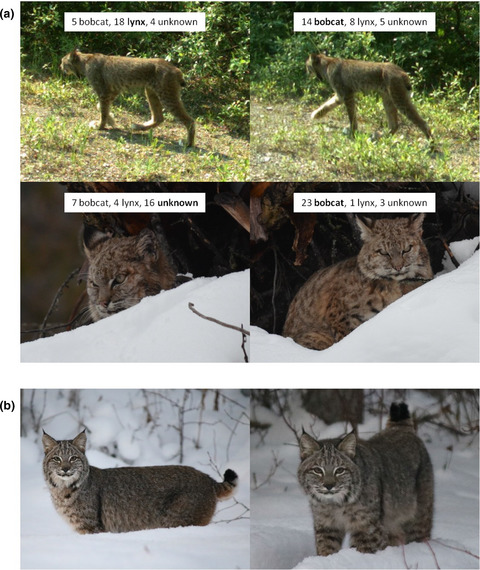
We measure agreement among experts in classifying camera images of two similar-looking and congeneric species, bobcats and lynx. Our results show that image classifications may be incorrect in many cases, and we recommend that studies using wildlife images consult multiple experts when classifying their images.
Complex gene expansion of the CYP2D gene subfamily
- Pages: 11022-11030
- First Published: 12 October 2018
Social environment affects the transcriptomic response to bacteria in ant queens
- Pages: 11031-11070
- First Published: 24 October 2018
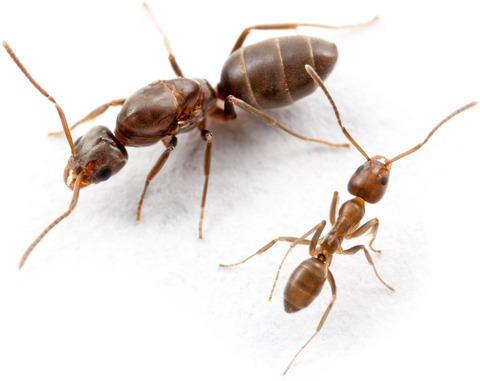
Social insects have a combination of individual immune responses and sophisticated collective behavioral and organizational disease defenses, that is, social immunity. We investigated how the presence or absence of these social defense lines affects individual-level immunity in ant queens after bacterial infection. We found that the absence of workers does not compromise the onset of an individual immune response by the queens, but that the social environment impacts the route of the individual innate immune responses.
Transcriptomic responses to predator kairomones in embryos of the aquatic snail Radix balthica
- Pages: 11071-11082
- First Published: 17 October 2018
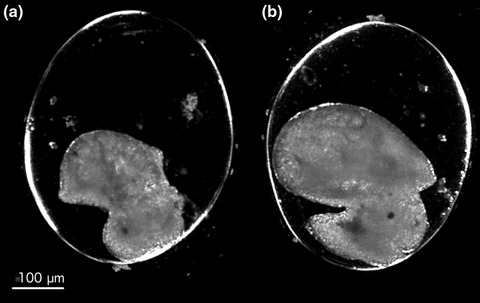
We describe molecular responses to predatory fish kairomone occurring at functionally distinct embryonic stages in a freshwater pond snail. We identify molecular responses indicative of accelerated growth, muscle function, and shell development, and these were responses that were also observed at the phenotypic level.
Short-distance barriers affect genetic variability of Rhizophora mangle L. in the Yucatan Peninsula
- Pages: 11083-11099
- First Published: 19 October 2018
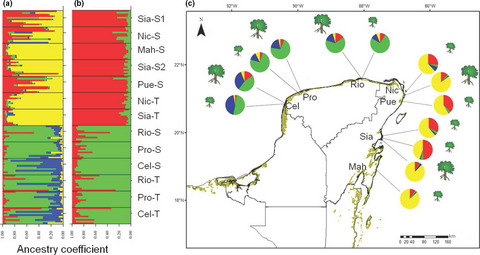
Mangrove species Rhizophora mangle has many physiognomic forms, the short one or scrub type occupies large extensions. We evaluate whether this type is genetically different from the tall type and found that differences are greater at local scale than at regional scale, indicating that short-distance ecological barriers exist between these two types of mangrove within a site.
Regional differences in winter diets of bobcats in their northern range
- Pages: 11100-11110
- First Published: 09 October 2018

Bobcats (Lynx rufus) are generalist North American predators that make use of a variety of prey types across their broad geographic range. We provide the first description of the winter diet of bobcats in northwest Montana and compare these findings to other studies of winter bobcat diet in similar northern latitudes.
Human paths have positive impacts on plant richness and diversity: A meta-analysis
- Pages: 11111-11121
- First Published: 16 October 2018
Competition alters seasonal resource selection and promotes use of invasive shrubs by an imperiled native cottontail
- Pages: 11122-11133
- First Published: 25 October 2018
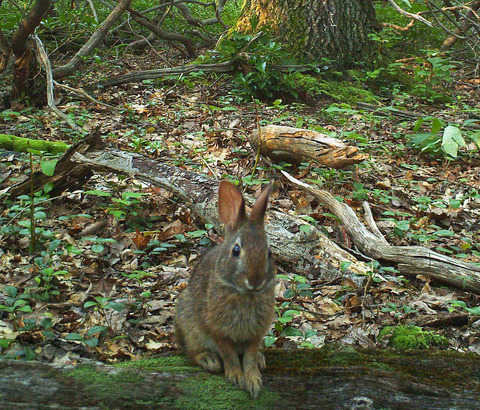
We present strong evidence that the prevalence of a nonnative competitor alters resource selection and promotes use of an invasive shrub by an imperiled native cottontail. We identify seasonal shifts in selection that could facilitate displacement of residents and identify resources to selectively manage to benefit desired over undesired species.
The metric matters when assessing diversity: Assessing lepidopteran species richness and diversity in two habitats under different disturbance regimes
- Pages: 11134-11142
- First Published: 26 October 2018
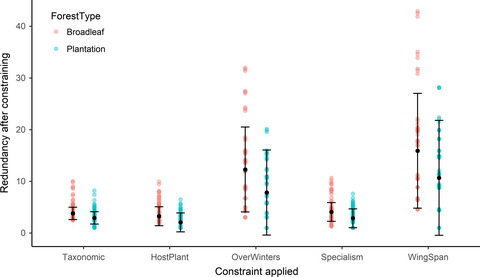
Functional diversity provides a mechanistic understanding of the impacts of anthropogenic disturbance on animal communities. Using a novel approach to assess diversity weighted by abundance we compare functional richness, diversity, and redundancy of lepidopteran communities under different disturbance regimes. While raw species richness was lower in disturbed sites, functional richness did not vary. Biotic functional homogenisation in both broadleaf and plantation sites suggests that landscape rather than local factors drive reduced functional diversity.
Paternity analysis, pollen flow, and spatial genetic structure of a natural population of Euterpe precatoria in the Brazilian Amazon
- Pages: 11143-11157
- First Published: 31 October 2018
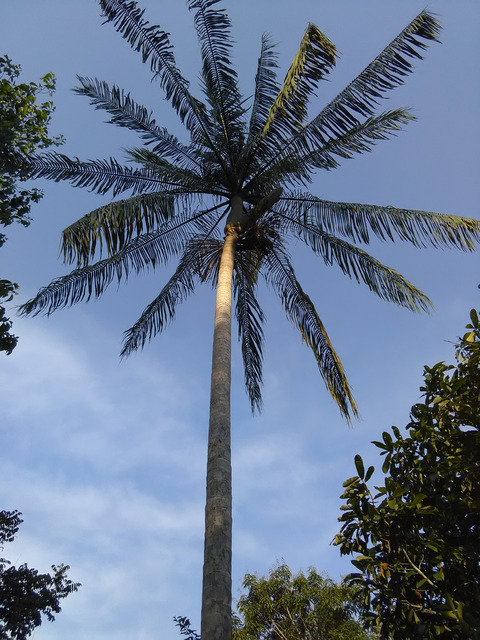
Euterpe precatoria, known as açaí do Amazonas, is a regionally important palm of the Amazon rainforest, due to its palm heart and fruit production. The fruit has a pulp rich in energy that is consumed raw and is much appreciated by local population in the Amazon. Fruit production is exclusively made by extractivism. We assess the genetic diversity, inbreeding level, spatial genetic structure, and gene flow in four ontogenetic stages (reproductive, immature, young, and seedling) of a natural E. precatoria population, in the Brazilian Amazon, based on 18 microsatellite loci. Our results indicate substantial pollen flow in the population, high genetic diversity in four ontogenetic stages, and absence of inbreeding to reproductive plants. In conservation terms, our results indicate that open-pollinated seeds must be harvested in mother plants distant at least 110 m from each other, to avoid collecting seeds from related mother plants. This study will help researchers to implement strategies for ex situ conservation of populations of this species.
Population responses of common ravens to reintroduced gray wolves
- Pages: 11158-11168
- First Published: 30 October 2018
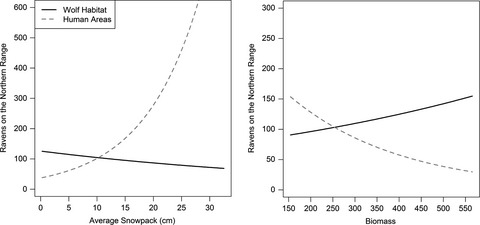
Grey wolves provide carrion to numerous scavenger species on the Northern Range of Yellowstone National Park, including common ravens. In the winter, common raven use of human-use areas and wolf habitat depends on winter severity as well as the amount of carrion biomass supplied by wolves. Wolf recovery in Yellowstone helped stabilize local raven populations by providing a regular winter food supply that was not directly tied to winter severity and ungulate winter-kill.
Soil organic carbon dynamics matching ecological equilibrium theory
- Pages: 11169-11178
- First Published: 18 October 2018
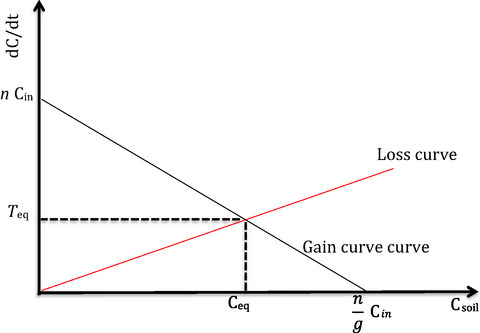
We postulate that the persistence of soil organic carbon (SOC) is an equilibrium point where SOC losses resulting from continuous decomposition and SOC gains due to SOC protection are balanced. The distinction between the forces that control SOC loss and gain, and their equilibrium, sheds light on SOC dynamics and can be used to quantify the relative roles of the abiotic and ecological factors on the temporal variation of SOC loss and gain.
Rainfall pulse response of carbon fluxes in a temperate grass ecosystem in the semiarid Loess Plateau
- Pages: 11179-11189
- First Published: 23 October 2018
Invasive species denialism: Sorting out facts, beliefs, and definitions
- Pages: 11190-11198
- First Published: 30 October 2018
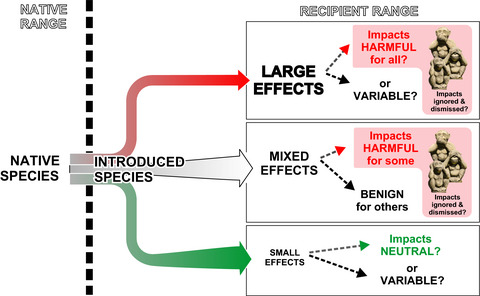
Upon introduction, some species may have large effects on the recipient ecosystems, but these effects are not necessarily all harmful (upper panel). Most introduced species have mixed effects, negative for some resident species or processes and positive for others (middle panel). Many introduced species have no major impacts, which does not entail that their small effects are not favorable for some resident species and deleterious for others. There is no evidence in the scientific literature that the negative effects of NIS are systematically ignored or dismissed (pink background).
Stand dynamics and competition in a mixed forest at the northern distribution limit of evergreen hardwood species
- Pages: 11199-11212
- First Published: 18 October 2018
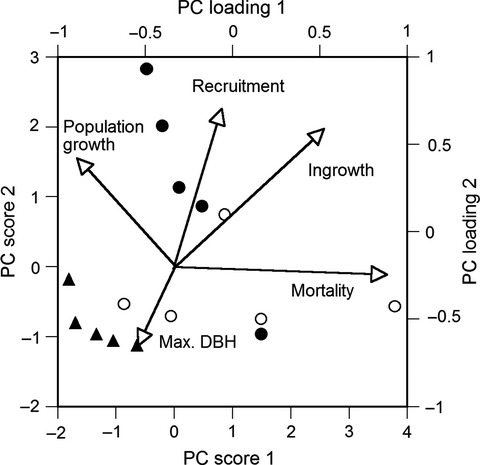
This study was conducted based on the long-term 13-year field observation at the northern distribution limits of evergreen hardwood species. We analyzed stand structure, stand dynamics, tree competition during 13 years, and population growth rates by matrix model. Therefore, this study analyzed thoroughly how dominant tree species of three growth forms (evergreen conifers, deciduous hardwoods, and evergreen hardwoods) maintain their population at a latitudinal ecotone from various analyses.
Short-term, low-level nitrogen deposition dampens a trophic cascade between bears and plants
- Pages: 11213-11223
- First Published: 25 October 2018
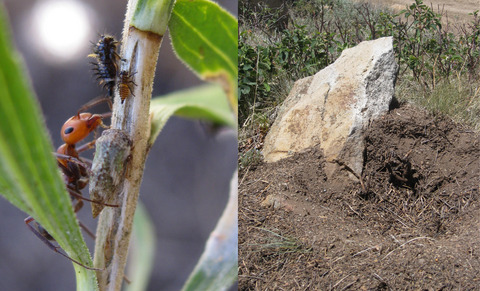
Elevated, yet low-level nitrogen deposition is currently impacting plant assemblages around the world, but it is unclear whether this subtle fertilization affects trophic cascades between predators and plants. I simulated low-level nitrogen deposition in a field experiment to evaluate whether nitrogen enrichment affected a trophic cascade from ant-eating black bears to plants. I found that nitrogen additions weakened plant–herbivore interactions and the indirect effect of bears on plants, suggesting that low-level nitrogen deposition may have widespread effects on trophic cascades.
Combining Bayesian genetic clustering and ecological niche modeling: Insights into wolf intraspecific genetic structure
- Pages: 11224-11234
- First Published: 30 October 2018
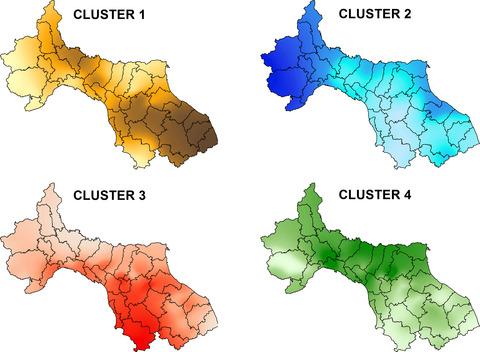
The distribution of intraspecific genetic variation and how it relates to environmental factors is of increasing interest to researchers in macroecology. Thus, we related genetic differentiation to ecological niche overlap among genetic groups resulting from spatial Bayesian clustering in the wolf population inhabiting part of the Italian peninsula. We found a significant relationship between genetic differentiation and ecological niche overlap and quantified differences in environmental factors among clusters.
Orchid diversity: Spatial and climatic patterns from herbarium records
- Pages: 11235-11245
- First Published: 30 October 2018
Embryonal life histories: Desiccation plasticity and diapause in the Argentinean pearlfish Austrolebias bellottii
- Pages: 11246-11260
- First Published: 30 October 2018
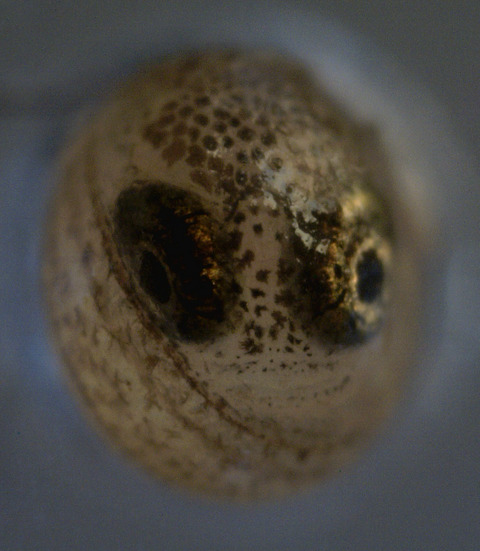
Embryos of annual killifish diapause in soil egg banks while ponds are dry. Their numbers at pond rewetting depend on rates of development and survival. We investigated plasticity for desiccation in the embryonal life histories of the Argentinean pearlfish Austrolebias bellottii across phases of mild desiccation and rewetting.
Leaf phenology of thirteen African origins of baobab (Adansonia digitata (L.)) as influenced by daylength and water availability
- Pages: 11261-11272
- First Published: 26 October 2018
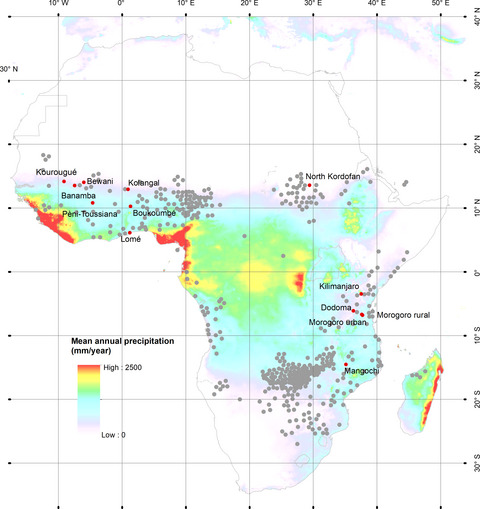
There are very few studies on triggering factors for phenology of dry zone tropical tree species, and even fewer studies that investigate how phenology is varying among origins in common garden experiments. In this study, we tested 13 baobab origins and their phenological response to drought stress and different daylengths. Our results demonstrate that both water availability and daylength influence flushing of leaves, and that origin react differently to these signals.
Preliminary insights into the genetics of bank vole tolerance to Puumala hantavirus in Sweden
- Pages: 11273-11292
- First Published: 26 October 2018
Navigating fragmented landscapes: Canada lynx brave poor quality habitats while traveling
- Pages: 11293-11308
- First Published: 26 October 2018
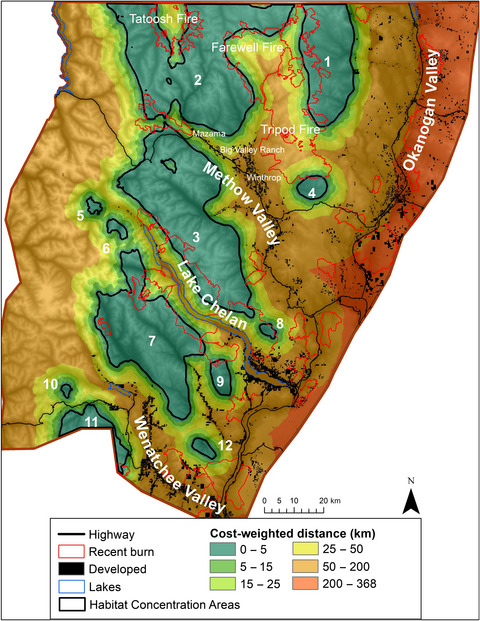
Habitat fragmentation often inhibits the movements of animals across landscapes. We identify areas of connectivity for Canada lynx as an example of a highly mobile carnivore that is specialized in habitat needs. We base our connectivity models on a Travel Habitat analysis revealing a broader range of habitats and thus areas of connectivity used by traveling lynx than by lynx in core habitat. We suggest that basing connectivity models on Travel Habitat analyses will better inform conservation efforts on fragmented landscapes.
Genetic diversity and differentiation among Prosopis alba (Leguminosae) populations from dry valleys of Bolivia with different levels of human disturbance and altitude
- Pages: 11309-11321
- First Published: 31 October 2018
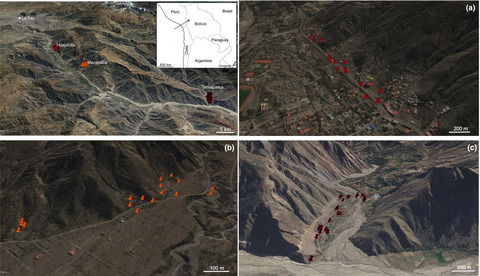
The article describes genetic variability and differentiation among Prosopis alba (Leguminosae) populations from dry valleys of Bolivia with different levels of human disturbance and altitude. The results are in agreement with the hypothesis that genetic diversity is reduced by the impact of anthropic disturbance in the population located at higher altitude in comparison with the lightly disturbed situated at lower altitude and farther from urban settlements. We discuss the results in order to provide some guidelines for management and conservation of the native resource.
Realized niche and microhabitat selection of the eastern green lizard (Lacerta viridis) at the core and periphery of its distribution range
- Pages: 11322-11336
- First Published: 31 October 2018
REVIEWS
The impact of artificial light at night on nocturnal insects: A review and synthesis
- Pages: 11337-11358
- First Published: 23 October 2018
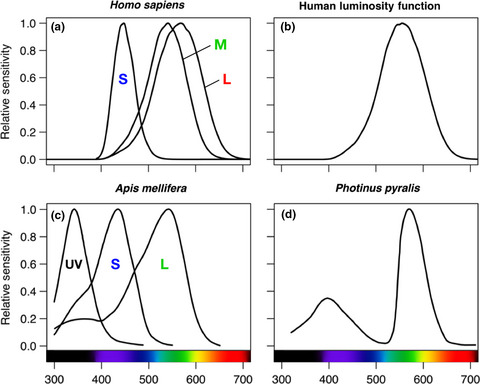
In recent decades, advances in lighting technology have precipitated exponential increases in night sky brightness worldwide, raising concerns in the scientific community about the impact of artificial light at night (ALAN) on crepuscular and nocturnal biodiversity. Long-term records show that insect abundance has declined significantly over this time, with worrying implications for terrestrial ecosystems. This review proposes five categories of ALAN impact on nocturnal insects, highlighting past research and identifying key knowledge gaps. We conclude with a summary of relevant literature on bioluminescent fireflies, which emphasizes the unique vulnerability of terrestrial light-based communication systems to artificial illumination.
LETTER TO THE EDITOR
The phylogenetic signal in tooth wear: What does it mean?
- Pages: 11359-11362
- First Published: 09 October 2018
A new study by Fraser et al (2018) urges the use of phylogenetic comparative methods, whenever possible, in analyses of mammalian tooth wear. We are concerned about this for two reasons. First, this recommendation may mislead the research community into thinking that phylogenetic signal is an artifact of some sort rather than a fundamental outcome of the evolutionary process. Secondly, this recommendation may set a precedent for editors and reviewers to enforce phylogenetic adjustment where it may unnecessarily weaken or even directionally alter the results, shifting the emphasis of analysis from common patterns manifested by large clades to rare cases.
REPLY TO LETTER TO THE EDITOR
Phylogenetic signal in tooth wear dietary niche proxies: What it means for those in the field
- Pages: 11363-11367
- First Published: 09 October 2018
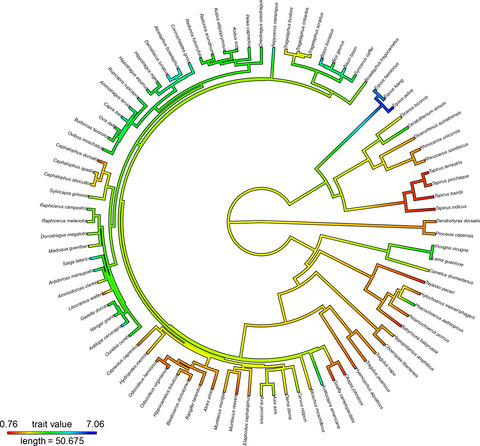
In response to DeSantis et al., we describe that the presence of phylogenetic signal in tooth wear dietary niche proxies is likely a result of the evolutionary process. We also address their concerns regarding enforcement of the use of phylogenetic comparative methods by editors of ecology and evolution journals.




